Everything’s coming up Dickey
Yeah, this is a month two months late, but do you have any more pressing Mets news to read in late October November?
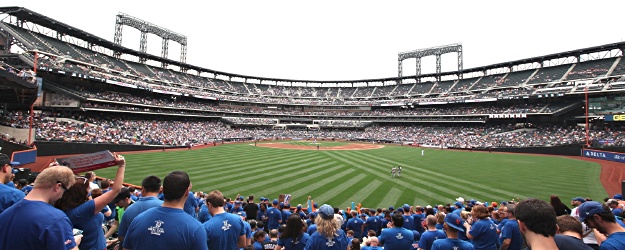
September 27 at Citi Field was a day of contradictions. The Mets were nearing the end of another losing season, but fans showed up in droves to cheer on a winner. No, not Keith Hernandez’s mustache, it was R.A. Dickey who put butts in seats after the previous games in the series failed to draw a crowd. In search of his 20th win, Dickey rescheduled his start to land on the final game at Citi Field in 2012. But before we get to that, something about this sounds familiar. A Mets star going for a milestone in New York against the Pirates? I’ve seen that one before in the only other home Mets game I ever attended, though the outcome was not a pleasant one.
The year was 1988 and the Mets were headed to their second division championship in three years. On a summer evening, I was headed to Shea Stadium with my brother’s Boy Scout troop to see my first home Mets game and what would be my only game at Shea Stadium. One of the conditions of my attendance was wearing some form of troop clothing, which in this case was a green hat. I was not thrilled with this arrangement, but I had no choice but to comply.
As the LaGuardia air traffic thundered overhead, seemingly only just beyond arm’s reach from the upper deck, Gary Carter was trying for his 300th home run. A Roger Rabbit themed fan sign implored Carter to hit #300 (I told you this was 1988…). He did not. Things quickly fell apart and the Pirates had a lead that was too much to hope for the Mets to come back from. We were forced to leave in the 8th inning so we could beat the traffic. We did not.
Citi Field has been a place that I’ve wanted to visit since it opened in 2010, but it’s just too far away for a casual visit and I’m not all that familiar with New York City despite living in its local television viewing area for my entire childhood. Going to a game would be nice, but there was no reason to make it a priority, especially with the last few dismal seasons of Mets baseball. I kept hearing about things to see there, but I didn’t know if I would ever get to see them. The Jackie Robinson Rotunda. The Mets Hall of Fame and Museum. The old Shea Stadium Home Run Apple. The team store and all of the Mets merchandise that isn’t available on the team’s web site. Shake Shack. Would I ever get to experience any of this?
As the 2012 season drew closer to its end (and another Mets 4th place finish), it looked like another year would go by without a Citi Field visit. When I saw that a certain polarizing t-shirt magnate was organizing a group trip to the final home game, I was intrigued, but I wasn’t sure I could make a trip like that happen. Sure, I haven’t been back to visit my parents in a while and I could just take the train down from there, but there was always a chance of something coming up at the last minute to derail any plans. With nothing firmly scheduled, tickets for the game were running out. I could always just get a seat somewhere else, but then I could have done that at any point this year. If I didn’t get in on the group purchase, it would undermine my procrastination and throw my world into chaos. So I bought a ticket and hoped for the best.
The world didn’t end and nothing conspired against me to make my plan go awry. With 24 hours before game time, I was just a four hour drive and a two hour train ride away from Citi Field.

And there it was. Stepping down from the subway platform revealed the stadium in all its glory. The old home run apple was front and center with a barber’s chair (and pole) up on a stage in preparation for Keith Hernandez’s mustache shaving. As exciting as that sounded, it seemed to be well-covered enough to skip and catch up on later. I took my first opportunity to enter the stadium and, a bag check and a pat down later (they have some real hands on staff in this place), I was in the famed Jackie Robinson Rotunda. After taking in the underwhelming sight and hitting the team store, it was off to the field in search of autographs.

Unfortunately, there was no formal batting practice that day and only a few pitchers who would not be in the game were warming up. Josh Edgin and Collin McHugh worked their way down the crowd that had gathered at the front of the field level seats. While these were two of the players I was most interested in getting autographs from (neither has any certified autograph cards), it was a little disappointing to see only two players out signing. From there it was back to the team store and a few of the other shops and then my seat. And then Shake Shack to see what all the fuss was about.
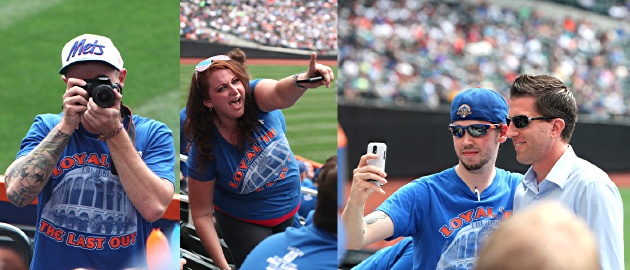
Now, remember that bit about being assigned group outing clothing? Man, that sucked. Oh, right, this ticket came with a t-shirt… At least it’s blue. When the shirts were made, the starting pitcher wasn’t known, but it would almost certainly not be R.A. Dickey. Until he rearranged his schedule to give the New York fans a chance to see his 20th win. With Dickey pitching, I couldn’t pass up a chance to wear my Dickey 2012 All-Star jersey, so the t-shirt would have to settle for being an undershirt. Surprisingly, almost everyone in the section was wearing the shirt (and at least two also had the Dickey jersey). There was that one guy in a Pirates jersey, but that’s all I’ll say about that desperate cry for attention. With several empty seats on either side of me, I settled in for what was sure to be an exciting game, especially once the beer vendor got to this section…

With defense like this, you’re gonna need a lot of strikeouts…
Dickey emerged from the bullpen to a standing ovation, his first of many at this game. He was dealing strikeouts from the start, with fans cheering every strike. This was actually quite helpful with the main scoreboards behind me and the information displayed on the secondary boards along the upper level difficult to decipher at a glance – cheer for strike, silence for ball. It was very much a playoff game atmosphere, even if there were only about 30,000 fans in the park. Unfortunately, a no-hitter was quickly off the table with a leadoff double in the second, as was a shutout after the inning’s second double. With three strikeouts and four hits in the second inning alone, the Pirates were making solid contact when they weren’t striking out and the balls kept finding their way past the Mets’ defenders. Things were not looking good.
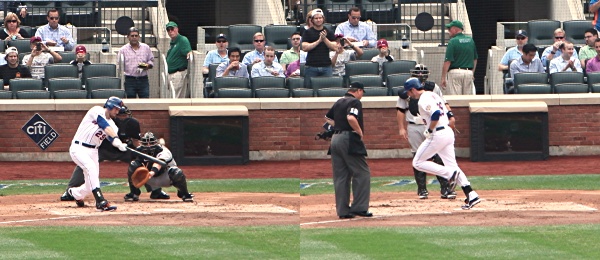
The Mets were going to need some runs if they were going to get Dickey his 20th win. Ike got things started with a home run in the bottom of the second and Mike Baxter almost added a second in the inning with a ball that was clearly headed over the wall. Until Travis Snyder made an Endy-style leaping catch to grab it. Watching it happen from behind the wall and seeing a glove appear out of nowhere is an interesting experience, but nobody there was all that thrilled to see a spectacular play that took a home run away from the home team.
The Pirates added a run in the 4th on a home run by former Met Rod Barajas, but I wasn’t paying attention because everyone in the section was busy checking in with Kevin. The Mets answered back with a run on three hits in the bottom of the inning and Dickey breezed through the Pirates in the top of the 5th with three Ks and a walk to get the Mets back up to bat. After Andres Torres walked to start off the bottom of the 5th, Ruben Tejada and Daniel Murphy singled to tie the game at three apiece. David Wright, not to be shown up by Murphy, cleared the bases with a three-run home run. Ex-Met Hisanori Takahashi finished off the inning, leaving the Mets with just a three-run lead. That would usually be plenty for Dickey, but the trouble in the 2nd combined with all of the pitches that come with a lot of strikeouts were wearing him down. The prospect of the bullpen taking over tempered the excitement of watching Dickey settle in and pitch like an ace.

After six innings, Dickey was nearing the end of his day. He was in line for the win if the bullpen could hold on, but he looked like he still had one inning left in him after a 1-2-3 6th. As interesting as things were in the outfield seats, the action was just too far away for clear shots. And so I left to find a better angle for the remainder of the game. The first base side of the concourse was far too crowded to get a view of the field, so I continued around to the third base side where I found one small gap to work with. Dickey made it through the 7th without incident, but his pitch count was high enough to guarantee that he wouldn’t be back for the 8th. And then he walked up to the plate to lead off in bottom of the inning.

All bets were off now that it was clear that Dickey would come out for the 8th, pitch count be damned. Not only that, but he clearly had plans with the bat, swinging for a hit in his final at bat of the day. He was then forced out at second on a fielder’s choice and walked off to another ovation. The Mets failed to pad their lead in the inning, only getting a runner past first when Daniel Murphy stole second before David Wright grounded out to end the inning.
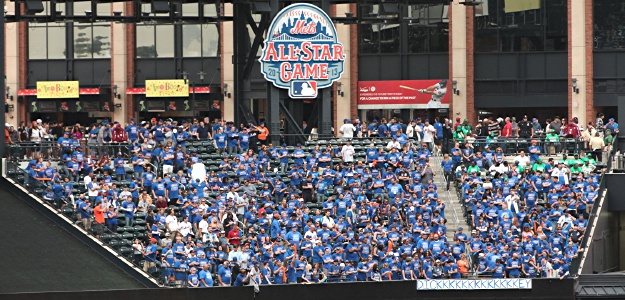
DICKKKKKKKKKKKKKEY!
The 8th inning would have to be his last, right? Dickey started the inning off with a pair of strikeouts and the stadium got louder and louder with every strike. The crowd was roaring when he got to two strikes on Travis Snyder, but ball 4 put an end to that. Once again, Snyder had silenced the crowd. Dickey then handed over the ball and returned to the dugout to another ovation, tipping his cap to the crowd as Josh Thole traded in his glove for something that less resembled a gaping maw of doom.

Jon Rauch came in to face Rod Barajas and quickly gave up a fly ball to deep left field. The ball was barely off the bat before someone in front of me shouted “You Suck!” That ball was caught, but the scene repeated itself in the 9th with a different result. Rauch had a good season, but he tended to give up the kind of big hits that people remember. Alex Presley got this day’s big hit off of Rauch with one out in the 9th, a two-run home run that ended Rauch’s day and came close to ending Dickey’s chances at a win. With the lead cut to one run, Bobby Parnell was brought in to get the final two outs. A fly ball to right looked like it could drop, but Mike Baxter got there in time to make the final out. He didn’t even have to crash into a wall for this one.

Who but Mike Baxter?
After more than 20 years, the Mets had a 20-game winner. Dickey once more took the field for high fives and Baxter handed him the ball that clinched it. The crowd cheered and nobody was quick to leave as Dickey stayed behind for an on-field interview. When it was time to leave, a good chunk of the crowd headed for the team store. I spent some time in the adjoining museum (which had no line to get in) and then began the long trip back. R.A. Dickey had just added a 13-K exclamation point to his Cy Young case, but the world would have to wait until November 14 for the results. On that day, a knuckleballer was awarded the Cy Young award for the first time in baseball history.
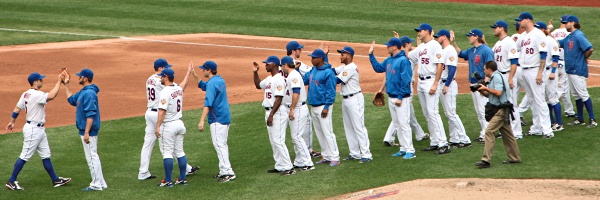


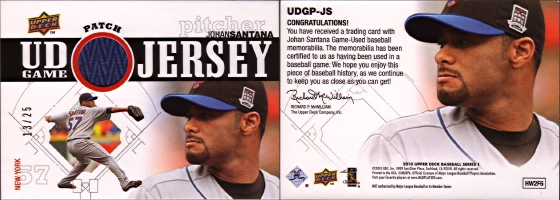
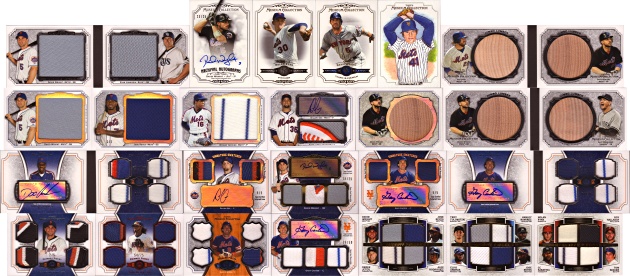


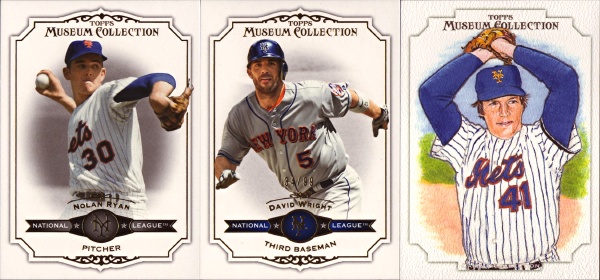
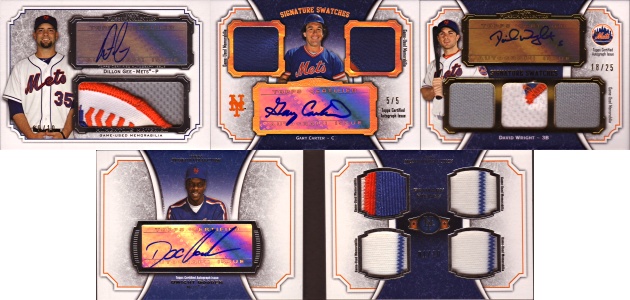

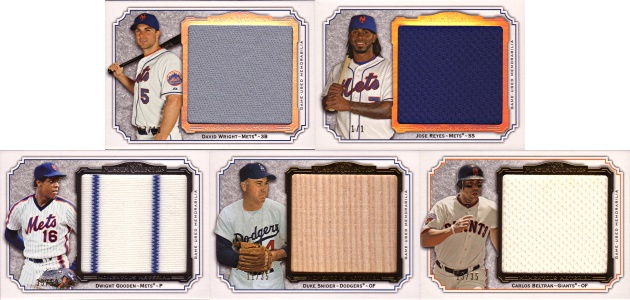
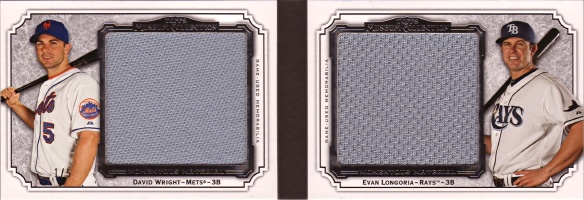




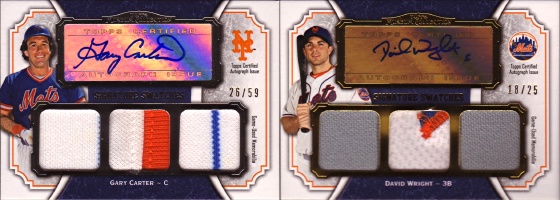
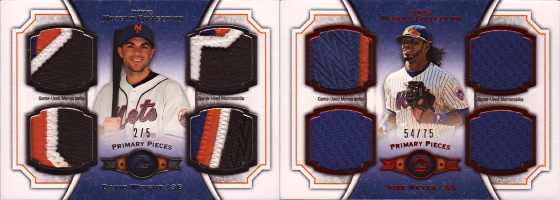



Recent Comments